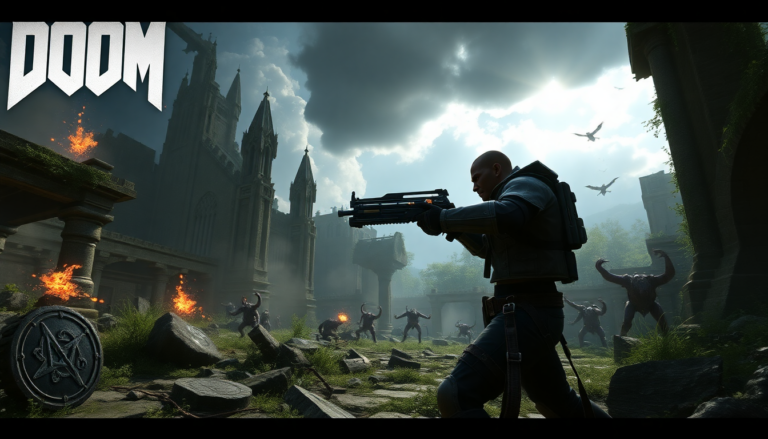Argomenti trattati
Remember the first time you felt the thrill of blasting demons in the original Doom? Fast forward to today, and you’ll find yourself in a world where nostalgia collides with modern gaming dynamics. Doom: The Dark Ages is here, and it’s not just another sequel; it’s a bold pivot towards a new gameplay experience tailored specifically for console enthusiasts. It’s like id Software decided to take a step back and rethink what makes Doom tick for a controller setup.
A console-first approach to gameplay
Upon diving into The Dark Ages, you’ll immediately notice that it’s designed with the console player in mind. Unlike its predecessors, which thrived on the precision of a mouse and keyboard, this iteration leans heavily into the comfort of a controller. The gameplay is distinctly slower-paced, emphasizing tactical maneuvers over rapid-fire reflexes. The protagonist, the Slayer, becomes less of a jet-fueled fighter and more of a steadfast tank, charging into the fray with a shielded front. This change, while polarizing, might just be the breath of fresh air the franchise needed.
In my experience, the shift in combat mechanics is palpable. The introduction of the Shield Saw—a new blocking mechanism—changes how players approach encounters. Blocking damage feels satisfying, but I found myself grappling with the limitations imposed by a controller. My instincts screamed for the fluidity of a mouse, but The Dark Ages is steadfast in its commitment to a console-centric design. It’s a unique challenge, but one that could captivate a new audience.
The arena design: flat and wide
One of the notable aspects of The Dark Ages is its arena design. Gone are the vertical, intricately layered battlegrounds of earlier titles. Instead, players are greeted with wide, flat landscapes, seemingly crafted to minimize the need for precision jumping or vertical mobility. As I navigated these spaces, I couldn’t help but feel a tinge of disappointment. The lack of verticality feels like a missed opportunity for exhilarating moments that characterized earlier Doom games. Yet, there’s a certain logic behind this design choice—less jumping means players can focus more on aiming and shooting rather than maneuvering.
But is it truly an improvement? Personally, I believe it comes down to individual playstyles. Console players may appreciate the reduced complexity, while those of us who thrived on the intricate platforming may feel stifled. The design caters to a more methodical gameplay experience, where the emphasis is on blasting hordes of demons rather than acrobatic feats. It’s a departure that some may welcome, but others may find frustrating.
Combat mechanics that simplify the chaos
The Dark Ages also reimagines how weapons function. The once-hot-swappable mods have been replaced by passive upgrades that streamline the experience, particularly beneficial for those who prefer the simplicity of a controller. This change means less fumbling through weapon wheels and more time blowing up demons. While I can appreciate the rationale, I can’t help but feel that this might dull the thrill of strategic combat that Doom is known for.
As I engaged in battles, the new mechanics felt less demanding. The lack of aerial threats reduces the urgency to aim high, with fewer Cacodemons or Revenants to keep you on your toes. Instead, you find yourself facing shielded Hell soldiers that stand resolutely, waiting to be obliterated. This change made me ponder: does simplifying gameplay truly enhance the experience? Or does it strip away the adrenaline-pumping moments we’ve come to expect from the franchise?
Is The Dark Ages a worthy successor?
As I reflect on my time with The Dark Ages, it’s clear that id Software has taken risks. The game’s approach—designed primarily for console—offers a fresh perspective that could either invigorate the series or polarize its fanbase. Sure, it’s not the frenetic pace of Doom Eternal or the tightly-knit corridors of Doom ’16, but it’s something entirely different. And maybe, just maybe, that’s exactly what we need.
In the end, I can’t help but root for The Dark Ages. It’s a gamble that could redefine FPS for console gamers. But for those of us who grew up with the series, this new direction might feel like a bittersweet farewell to the high-octane chaos that once defined our battles. As we look ahead to 2025 and beyond, I can only hope that id Software finds a way to balance these contrasting playstyles. After all, everyone loves a good comeback story, right?

